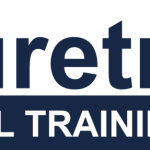Investing in real estate has long been an avenue for wealth accumulation, and one of the prominent ways to enter this market is through buy-to-let properties. These properties, purchased with the intention of generating rental income, are underpinned by buy-to-let mortgages – the financial bedrock of property investment. In this quick guide, we delve into the intricate tapestry of buy-to-let mortgages, exploring their nuances, regulatory implications, financial considerations, and more.
Please read through y and you can test your knowledge at the end.
Understanding Buy-to-Let Mortgages

At its core, a buy-to-let mortgage is designed to empower individuals to purchase properties with the intention of renting them out, rather than occupying them as their primary residence. These mortgages differ from traditional residential mortgages due to their distinct financial dynamics that cater to the unique aspects of property investment. The majority of buy-to-let mortgages are not subjected to regulation by the Financial Conduct Authority (FCA) and fall outside the purview of the Mortgage Conduct of Business (MCOB) rules. However, there are certain exceptions, particularly when a mortgage aligns with the criteria of a regulated consumer buy-to-let (CBTL) mortgage—a novel category of buy-to-let mortgage.
Unpacking Consumer Buy-to-Let and Business Buy-to-Let
Within the landscape of buy-to-let mortgages, two primary classifications emerge: consumer buy-to-let (CBTL) and business (professional) buy-to-let. The former is tailored for individuals who find themselves in the landlord role due to personal circumstances. This includes scenarios like inheriting property or necessitating sudden relocations(also known as accidental landlords). CBTL mortgages fall under FCA regulation, necessitating mortgage brokers and lenders to acquire FCA authorization. The application process parallels that of residential mortgages.
Conversely, business buy-to-let mortgages remain unshackled from FCA oversight. They are designed for properties intended solely for rental income within the scope of a business endeavor. Lenders often mandate that borrowers maintain a primary residence or have ownership of other properties. Minimum income thresholds and age restrictions are commonplace, safeguarding borrowers’ financial stability as they venture into property investment.
The Significance of Yield Calculation and Viability Assessment
Central to the buy-to-let investment landscape is the calculation of potential returns. At the forefront stands the concept of rental yield—an essential metric gauging the annual rental income as a percentage of the property’s value. However, the net yield takes a more nuanced approach, considering operational costs to present a more accurate picture of the investment’s potential. Armed with the calculations of gross and net yields, investors can meticulously weigh the attractiveness of a property compared to alternative investment opportunities.

Maintenance costs, property management fees, and potential mortgage payments must all be factored into yield calculations. It is imperative to acknowledge that mortgage payments wield considerable influence over net income and the overall return on investment. Additionally, anticipation of capital appreciation over time elevates the investment’s allure, particularly in regions poised for growth.
Navigating Regulatory Waters and Evaluating Affordability
Regulatory vigilance is a cornerstone of the buy-to-let mortgage landscape. The Prudential Regulation Authority (PRA) stands as the sentinel over buy-to-let mortgages that elude the FCA’s consumer buy-to-let regime. The PRA’s mandate encompasses establishing minimum standards to ensure the sustainability and affordability of non-regulated buy-to-let lending.
Under the PRA’s purview, lenders are tasked with evaluating the affordability of buy-to-let mortgage contracts. Criteria span a range of factors, including the interest coverage ratio, income affordability, and interest rate affordability stress tests. This comprehensive approach ensures borrowers are well-equipped to handle mortgage payments while securing a balance between rental income and mortgage costs.
Stamp Duty Land Tax and Additional Considerations

In the realm of property investment, fiscal considerations are paramount. Notably, the purchase of buy-to-let properties and second homes often attracts a 3% Stamp Duty Land Tax (SDLT) surcharge. This surcharge is in addition to the standard SDLT rate and serves as a deterrent against property speculation, championing the cause of primary home ownership.
The Total Return Equation
Calculating the total return on a rental property serves as a beacon illuminating investment performance. This calculation is an amalgamation of net income, mortgage costs, and prospective capital growth—a comprehensive evaluation of an investment’s potential. Notably, mortgage payments wield significant influence over net income, thereby impacting the total return. Additionally, the prospect of property value appreciation, coupled with rental income, can propel the total return, especially in property hotspots.
Empowering Informed Decision-Making
Embarking on a journey into the realm of buy-to-let property investment necessitates an informed approach. Prospective landlords must navigate regulatory frameworks, meticulously assess affordability, and conduct thorough return calculations. Whether embarking as a consumer driven by personal circumstances or as a business professional with a strategic vision, individuals are well-advised to undertake comprehensive research prior to embarking on their property investment odyssey.
In Summary

In summation, buy-to-let mortgages epitomize the entry point to the dynamic world of property investment, offering individuals the prospect of generating rental income and capitalizing on property appreciation. Navigating the regulatory landscape, assessing affordability, and projecting potential returns equip aspiring investors with the tools to navigate the intricate terrain of buy-to-let investments. Armed with prudent research and a deep comprehension of the buy-to-let mortgage landscape, individuals can unveil the full potential of property investment as an invaluable addition to their financial portfolio. Our CeMAP courses include training material that breaks all this down in our UK financial Regulations and Mortgages Made easy books.
In the meantime you can test your knowledge with the following multiple-choice questions based on Buy to Let.
**Question 1:**
What differentiates a regulated consumer buy-to-let (CBTL) mortgage from a business buy-to-let mortgage?
A) The interest rate offered by lenders.
B) The borrower’s credit score.
C) The borrower’s primary residence ownership.
D) The mortgage term length.
Correct Answer: C
The borrower’s primary residence ownership.**
**Explanation:**
CBTL mortgages are intended for individuals with personal circumstances, often requiring the borrower to own a primary residence. Business buy-to-let mortgages, however, do not require the borrower to own a primary residence.
**Question 2:**
Why is the calculation of net yield considered a more comprehensive metric than gross yield for evaluating property investment?
A) Net yield accounts for potential capital appreciation.
B) Gross yield considers property maintenance costs.
C) Net yield reflects potential mortgage payments.
D) Gross yield calculates the rental income only.
Correct Answer: C
Net yield reflects potential mortgage payments.**
**Explanation:**
Net yield includes operational costs, such as maintenance and mortgage payments, which provides a more accurate assessment of the property’s profitability compared to gross yield.
Question 3:
Under what circumstances would a consumer buy-to-let (CBTL) mortgage NOT be applicable?
A) When an individual inherits a property and rents it out.
B) When an individual purchases a property primarily for rental income.
C) When an individual quickly purchases a property due to job relocation.
D) When an individual owns multiple properties as part of a business.
Correct Answer: D
When an individual owns multiple properties as part of a business.**
**Explanation:**
Individuals who own multiple properties as part of a business venture would typically not be considered CBTL borrowers even if they acquire another property under certain circumstances.
Question 4:
What is the primary goal of calculating the total return on a rental property?
A) To determine the potential rental income over time.
B) To project the property’s future market value.
C) To assess the property’s capital appreciation potential.
D) To evaluate the overall investment performance.
Correct Answer: D
To evaluate the overall investment performance.**
**Explanation:**
Calculating the total return involves assessing net income, mortgage costs, and potential capital growth to provide a comprehensive evaluation of the investment’s performance.
Question 5:
How does the Prudential Regulation Authority (PRA) contribute to the regulation of buy-to-let mortgages?
A) It oversees business buy-to-let mortgages only.
B) It determines the interest rates for buy-to-let mortgages.
C) It defines the criteria for consumer buy-to-let (CBTL) mortgages.
D) It sets minimum standards for the sustainability and affordability of non-regulated buy-to-let lending.
Correct Answer: D
It sets minimum standards for the sustainability and affordability of non-regulated buy-to-let lending.**
**Explanation:**
The PRA’s oversight extends to non-regulated buy-to-let lending, ensuring sustainability and affordability through minimum standards.
In addition to helpful CeMAP articles/Q&A like the above when you register on our training course you are provided with a complete pack of official LIBF question for CeMAP 1, 2& 3.





